
Humans have been subservient to cats for thousands of years.
©Jérémy Stenuit/iStock via Getty Images
Cats know they reign supreme in modern-day houses. Ask any cat owner and they will agree that cats believe themselves to be the owners, and the human owners are merely servants to feed them, give them scratches, and clean their litter boxes.
The human-cat relationship has been around since ancient times, and even then, cats were still being pampered and treated like royalty while dogs were lovable coworkers. Ancient Egyptians are famous for depicting cats as godly beings, treated with the highest respect and admiration. Cats certainly remember their treatment, and still demand it to this day.
But why did ancient Egyptians love cats so much? What made them more special than dogs? How did the ancient Egyptians view cats and what meaning did they give them? This article will explain all that, so let’s get started!
Domesticating Cats

Cats are natural predators and will hunt mice, reptiles, and fish to feed themselves in the wild.
©Amerigo_images/Shutterstock.com
First, cats were never technically domesticated. Humans and cats lived together in peace because they never competed for food or space. The reason humans and cats get along so well is because they mutually benefit from each other.
Before the modernization of food, humans spent hours farming and tending to crops to feed their family and make money. Pests like rats and vermin sometimes ate the crops, limiting the amount of food produced. Cats are natural predators of rodents, thus wonderful protectors of the crops. Humans recognized this and allowed the cats to roam the fields for food.
When the weather changed and cats struggled to avoid the heat or severe cold, humans brought the cats indoors for shelter. Once inside, cats hunted the mice and rats in the home, protecting the family from rodents and diseases.
Over time, humans and cats naturally agreed to work and live together.
Why Did Egyptians Worship Cats
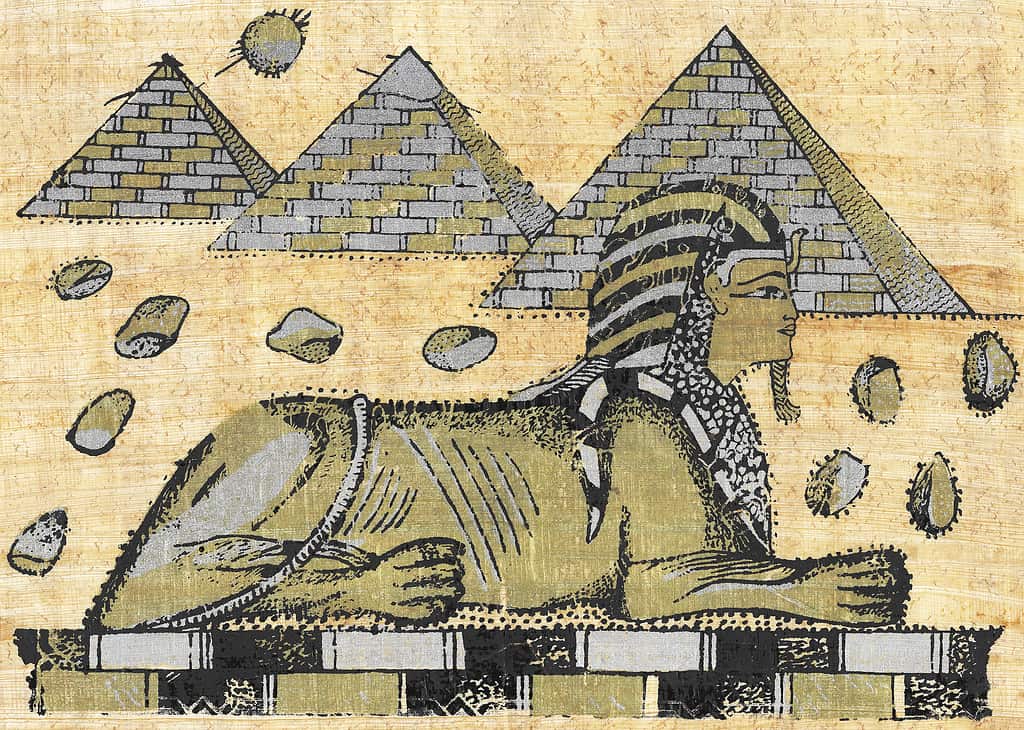
The Great Sphynx is a combination of a human and a
lion
, showing the cultural importance of felines.
©bravo1954/iStock via Getty Images
Cats are easily found on ancient Egyptian wall art, murals, and their mythology. Ancient Egyptians held strong beliefs of gods being represented as animals, as well as being capable of transforming into animals or humans at will with their magic.
Magical Beings
Egyptians worshiped cats because they were seen as magical creatures, providing good luck, fortune, and protection to wherever the cat wandered. Cats channeled divine energy from the gods, blessing homes from illness, bad fortune, and misery.
Rodent Control
Additionally, farming was a big source of food and income in Ancient Egypt. The Nile River provided farmland with plenty of water for crops to grow but also attracted rodents and other vermin. Farmers allowed cats to wander their fields, killing rodents and insects to protect their valuable crops.
Home Protectors
Cats are highly territorial animals and expert predators to kill the toughest of opponents like venomous snakes and scorpions. It was common for venomous creatures to enter a house, seek shelter or food, and accidentally get into a confrontation with a human. Without the invention of anti-venom, bites from venomous snakes were often fatal. Cats saw human shelters as part of their territory and would kill snakes entering it, protecting the family.
Royal Pets
Hieroglyphs depict cats sitting or playing under tables alongside the Pharaoh and other royal families as companion pets. Across Upper and Lower Egypt, murals, and wall art show cats as part of daily life for families to offer companionship and comfort. Cats are prone to bringing gifts such as birds or fish to their adopted humans.
How Did Ancient Egyptians Honor Cats
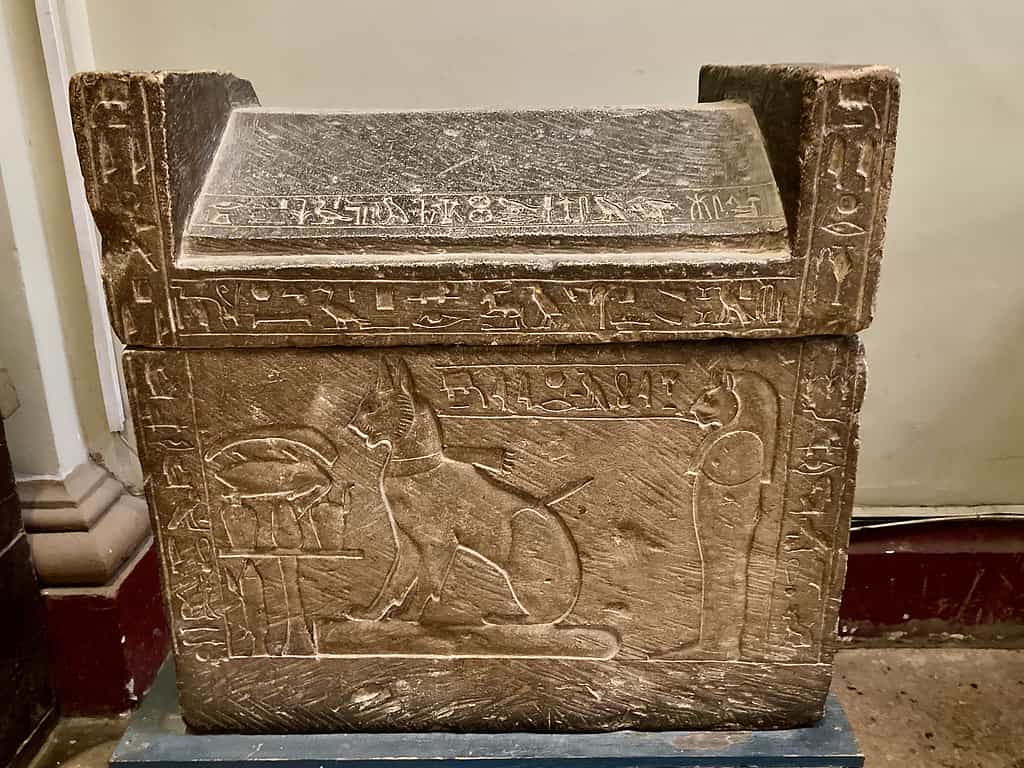
Mummified cats were capable of channeling divine energy, even when deceased.
©Zsanett Laluska/iStock via Getty Images
Cats were held to the highest standard in Egyptian culture. As animals associated with divine energy, they were treated with great care and provided with everything a cat could ask for.
Wealthy families dressed their cats in jewelry and provided them with dinners of fish or fish eggs as a meal. Cats had dedicated servants to ensure they were healthy and given objects to scratch and places to bury their feces. If a cat defecated in the palace, guards would be ordered to clean the remains after the cat.
Deceased cats were mummified and placed in special burial locations for families to mourn. Pharaohs would demand their pet cats be mummified and buried with them in their tombs when they passed on. The first recorded cat sarcophagus belonged to Prince Thutmose, the eldest son of Pharaoh Amenhotep III. The cat was named Ta-Miu, meaning female cat.
Mourning families shaved their eyebrows in honor of their deceased companion. The family would continue mourning until their eyebrows grew back.
Cats were so sacred, that the punishment for accidentally killing a cat would range from severe capital punishment or death.
Cat Gods of Ancient Egypt
Ancient Egyptians had a polytheistic belief system. Many of their gods were personifications of the world around them, combined with the various animals they held in great respect. For instance, one of the most famous gods is the sun god Ra, depicted as a falcon or human-falcon hybrid. Ra was said to be the sun, providing light for the world. Falcons are capable of reaching great heights in the sky where the sun resides. It made sense to believe the sun was a human-bird fusion.
Since cats were associated with the divine, it was only natural that several gods would be depicted as cats.
Bastet / Bast

Bastet is a cat goddess, typically seen as a woman with the head of a black cat.
©o-che/iStock via Getty Images
Bast is the goddess of protection, pleasure, and good health. She is often depicted with the symbol of a cat, or a humanoid woman with the head of a black cat. Bast is an important figure in Ancient Egyptian culture because she was the daughter of Ra (the sun god) and Isis (the mother god of healing and magic).
Bast was so famous that a city named Bubastis or Per-bast (meaning House of Bast) was named in her honor. The city did offer the ritualistic sacrifice of cats for the gods, but they used cats specifically bred for ritual sacrifice and were allowed to proceed to appease the gods. They were the only ones allowed to harm a cat, while everyone else would likely get a death sentence.
Bast is a direct embodiment of what ancient Egyptians saw in cats, beings of protection, pleasure, and good health. Having a cat in one’s house showed they were blessed by Bast.
Sekhmet
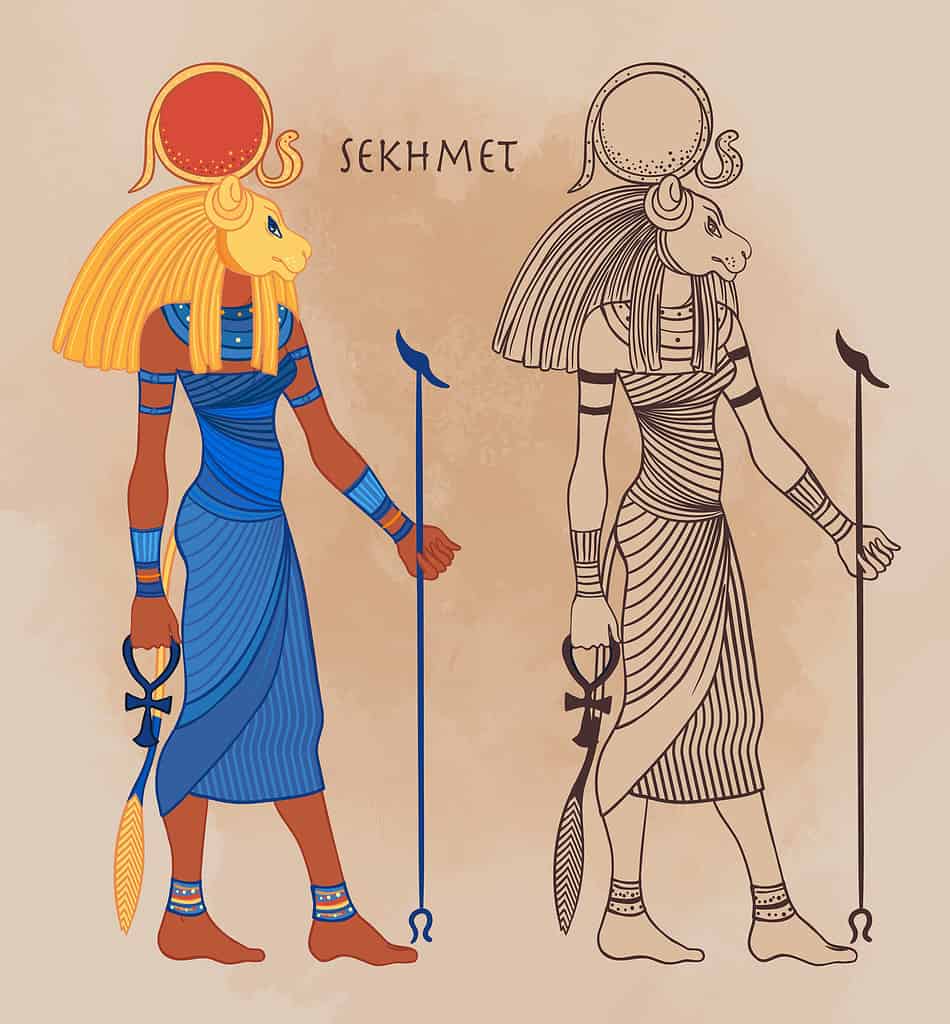
In Egyptian mythology, Sekhmet was prayed to for strength and in times of war.
©vgorbash/iStock via Getty Images
Sekhmet is a lioness goddess of war and healing. She is depicted as a human-lion hybrid with a woman’s body and a lioness’ head. Similar to lions, she was a fierce god and channeled by those going to war. Sekhmet was so prominent in the Egyptian pantheon, that stories tell she was created from Ra’s eye when he gazed upon the Earth. Ra created her as a symbol to destroy humans for not following specific laws and principles illustrated at the time.
Sekhmet is a perfect translation of the fierce power and strength of cats in the area. Cats were noble warriors, capable of attacking and killing prey quickly. Lionesses are the epitome of this as they are the true hunters and meat-bringers of the pride while the male lions remain home.
Mafdet
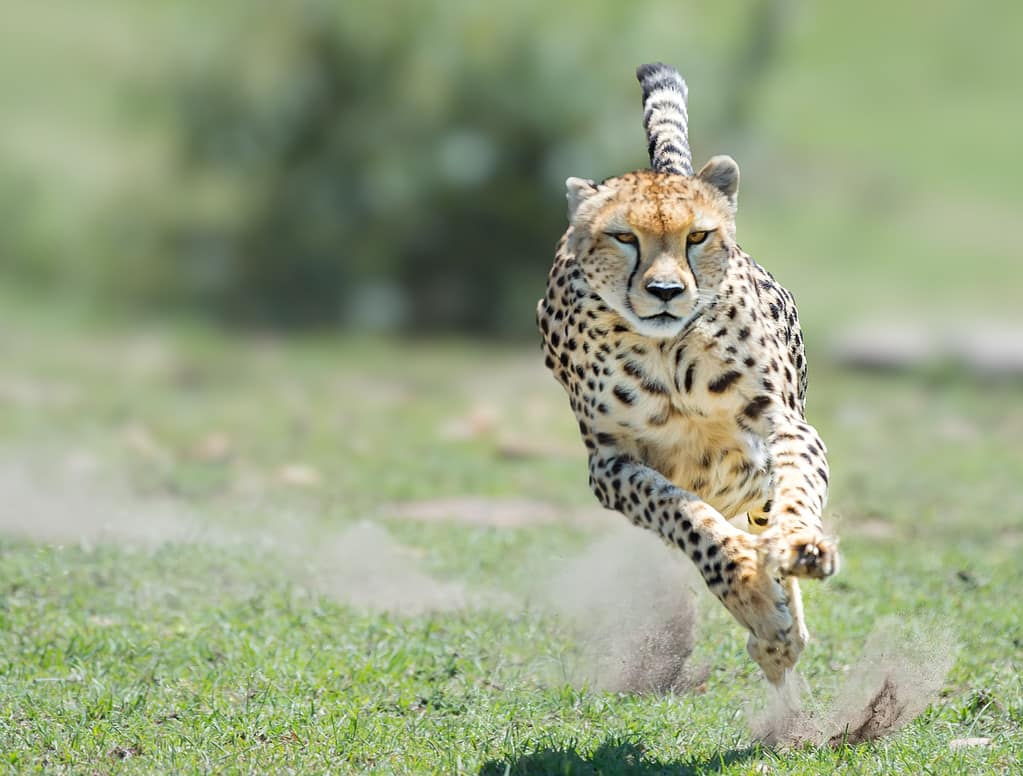
Unfortunately, Mafdet is a mostly forgotten goddess who was overtaken by other gods over time.
©Kandfoto/iStock via Getty Images
Mafdet is a cheetah goddess who was summoned to protect humans from snakes and scorpion bites, as well as legal justice and capital punishment. Ancient Egyptians believed in many gods and had a god or goddess for practically everything. Mafdet is a specific goddess people would pray to when they were threatened by the various venomous creatures in the region.
As explained before, cats are territorial and efficient predators, capable of killing snakes and scorpions. Because snakes move at lightning-fast speeds, it would take an animal with equal speed to kill one before a snake or scorpion strikes. Cheetahs are the fastest land mammals, and Ancient Egyptians would naturally combine their speed with a goddess capable of combating fast threats.
Egyptian Book of the Dead
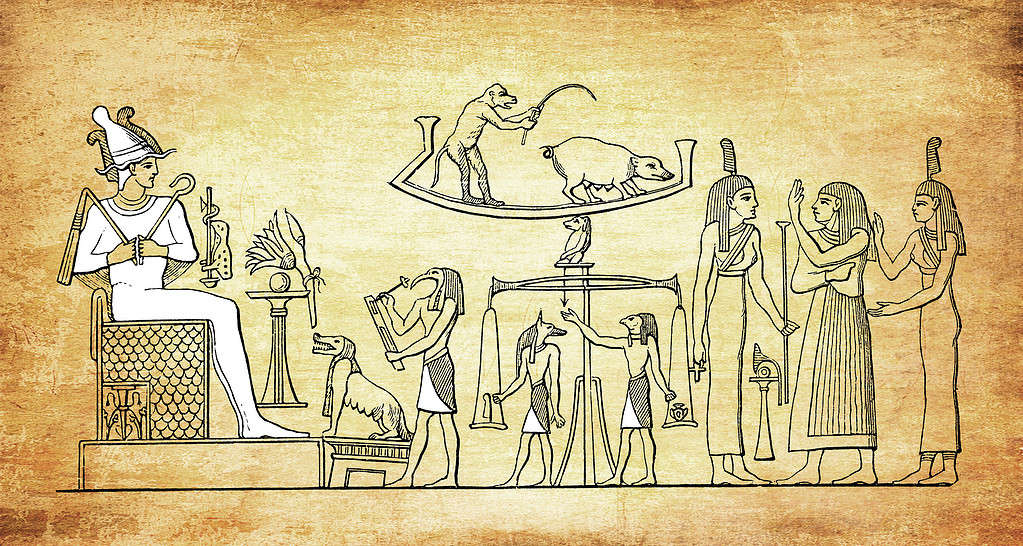
To enter the Duat, a person’s heart was weighed against a feather. Gods judged and recorded the results.
©Luisa Vallon Fumi/iStock via Getty Images
The Book of the Dead was a tome handed to the deceased to help them navigate the Duat (Ancient Egyptian afterlife). The Duat was said to be very similar to the normal world, but with more spirits and gods running around.
One section in the Book of the Dead illustrates a cat wielding a knife and attacking Apophis (snake god of chaos and calamity). Apophis was a dangerous being, trying to devour the sun and plunge the world into darkness. Each night Apophis would succeed and eat the sun, then it went on a journey to regenerate and be reborn the next day.
The symbolism of a cat attacking Apophis is powerful imagery to highlight the superiority and respect the ancient Egyptians held for cats, and showcase that cats are successful predators to snakes.
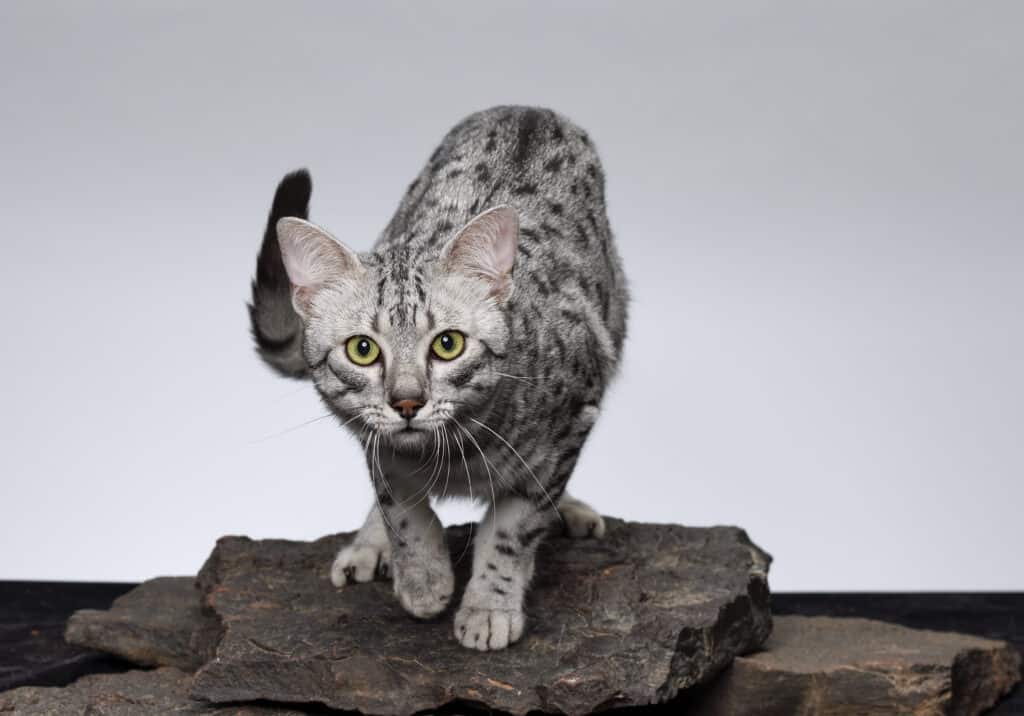
Egyptian mau
are popular cats in Egypt for their natural spots and playful nature.
©iStock.com/Thomas Leirikh
Honestly, does anyone need a reason to love cats? Even thousands of years ago, the ancient Egyptians understood that cats were amazing creatures, worthy of our respect and admiration. In modern day, cats continue to believe they are gods and goddesses, demanding plenty of praise and worship.
The photo featured at the top of this post is © pongskorn eampraditphan/iStock via Getty Images
Thank you for reading! Have some feedback for us? Contact the AZ Animals editorial team.






